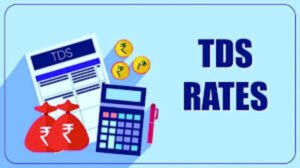Section 35AD of the Income Tax Act, introduced by the Finance (No. 2) Act, 2009, is a significant provision aimed at fostering investment in specified businesses by offering substantial tax incentives. This section allows taxpayers to claim a 100% deduction on capital expenditures incurred for certain businesses, promoting the development of critical infrastructure and other essential sectors in India. In this blog, we will delve into the key aspects of Section 35AD, its benefits, eligible businesses, and practical implications for taxpayers.
What is Section 35AD?
Section 35AD provides an investment-linked tax incentive by allowing a 100% deduction on capital expenditure incurred wholly and exclusively for specified businesses during the financial year in which such expenditure is incurred. This provision was designed as an alternative to the profit-linked deductions available under various sections of the Income Tax Act, which were often seen as less equitable and led to higher compliance burdens.
Eligibility for Deduction under Section 35AD
To claim the deduction under Section 35AD, the capital expenditure must be incurred for a business that qualifies as a “specified business” under the Act. The deduction is available in the year in which the expenditure is incurred, even if it is incurred before the business commences operations, provided that the expenditure is capitalized in the books of accounts on the date of commencement.
What are Specified Businesses under Section 35AD?
The scope of Section 35AD covers various businesses deemed critical for the nation’s infrastructure and development. Over time, the government has expanded the list of specified businesses to include:
- Cold Chain Facilities
- Warehousing for Agricultural Produce
- Cross-Country Pipeline Networks
- Hotels and Hospitals
- Affordable Housing Projects
- Fertilizer Production
- Inland Container Depots and Container Freight Stations
- Bee-Keeping and Production of Honey and Beeswax
- Warehousing for Sugar Storage
- Slurry Pipelines for Iron Ore
- Semiconductor Wafer Fabrication
- Infrastructure Facilities
Key Conditions for Claiming Deduction
While Section 35AD offers a substantial tax benefit, certain conditions must be met to qualify:
- No Reconstruction or Splitting
- New Machinery and Plant
- Asset Usage

Restrictions on Other Deductions
One of the critical features of Section 35AD is that once a deduction is claimed under this section, no other deductions can be claimed under Chapter VI-A or Section 10AA for the same business. This provision ensures that the taxpayer cannot double-dip by claiming multiple deductions for the same expenditure.
Recent Amendments and Updates
Over the years, Section 35AD has undergone several amendments to keep pace with the changing economic environment and the government’s policy priorities. Some notable updates include:
- Optional Deduction
- Expansion of Specified Businesses
- Clarifications on Asset Utilization
Practical Implications for Taxpayers
Section 35AD offers a powerful tool for businesses operating in critical sectors to optimize their tax liabilities by claiming deductions on capital expenditures. However, businesses must carefully evaluate their eligibility and ensure compliance with all conditions to avoid potential reversals of deductions. Moreover, the optional nature of the deduction from 2020-21 onwards allows businesses to strategically decide whether to claim the deduction based on their long-term financial planning.
Frequently Asked Questions (FAQ) about Section 35AD
1. What is Section 35AD of the Income Tax Act?
Section 35AD of the Income Tax Act provides a 100% deduction on capital expenditure incurred by businesses in specific sectors. This deduction applies to expenditures made for establishing or expanding businesses defined as “specified businesses” under the Act.
2. Which businesses are eligible for deductions under Section 35AD?
Eligible businesses include those involved in cold chain facilities, warehousing for agricultural produce, cross-country pipeline networks, hotels, hospitals, affordable housing projects, fertilizer production, inland container depots, bee-keeping, sugar storage warehouses, slurry pipelines for iron ore, semiconductor wafer fabrication, and certain infrastructure facilities.
3. Is the deduction under Section 35AD mandatory?
No, the deduction under Section 35AD is optional for assessment years starting from 2020-21. Taxpayers can choose whether to claim this deduction based on their specific financial strategy and tax planning needs.
4. Can I claim deductions under other sections if I claim under Section 35AD?
Once a deduction under Section 35AD is claimed, you cannot claim deductions for the same business under Chapter VI-A (like Section 80-IA) or Section 10AA. This provision prevents taxpayers from claiming multiple deductions for the same capital expenditure.
5. What conditions must be met to qualify for deductions under Section 35AD?
To qualify, the business should not be a reconstruction or splitting up of an existing business, and it should not involve the transfer of previously used machinery or plant unless the value of such machinery is less than 20% of the total value of the machinery used in the business.
6. How long must assets be used for the specified business to retain the deduction under Section 35AD?
Assets must be used exclusively for the specified business for at least eight years. If these assets are used for other purposes within this period, the deduction claimed may be reversed, with adjustments made for depreciation.
7. What happens if I sell or transfer an asset for which I claimed a deduction under Section 35AD?
If you sell, transfer, or use the asset for any purpose other than the specified business within eight years, the total amount of deduction claimed, minus the depreciation, will be added back to your income and taxed as “Profits and gains of business or profession.”
8. Are there any exceptions to the asset utilization rule under Section 35AD?
Yes, the asset utilization rule does not apply if the company becomes a sick industrial company under Section 17(1) of the Sick Industrial Companies (Special Provisions) Act, 1985, during the eight-year period.
9. Can losses from a specified business under Section 35AD be set off against other business profits?
Losses from a specified business under Section 35AD can only be set off against profits from other specified businesses. If there is no other specified business profit to set off the loss against, the loss can be carried forward for future years to set off against profits from specified businesses.
10. How has Section 35AD changed over the years?
Section 35AD has been amended several times since its introduction. Key changes include the expansion of eligible businesses, the introduction of the optional deduction, and more stringent rules for asset utilization. These amendments aim to make the section more effective in promoting investments in critical sectors.
11. When is the best time to claim the deduction under Section 35AD?
The best time to claim the deduction depends on your business’s financial strategy, tax liabilities, and the nature of your capital expenditure. Consulting with a tax professional is advisable to determine the optimal time for claiming the deduction.
Conclusion
Section 35AD is a cornerstone of India’s tax policy aimed at incentivizing investments in infrastructure and other vital sectors. By offering a 100% deduction on capital expenditures for specified businesses, this provision plays a crucial role in driving economic growth and development. Businesses operating in the specified sectors should leverage this benefit to maximize their tax efficiency while contributing to the nation’s progress.
Understanding the nuances of Section 35AD and staying updated on its amendments is essential for tax professionals and businesses alike. With the right strategy and compliance, the benefits of this section can be fully realized, leading to significant tax savings and investment in India’s future.
For more insights on optimizing your tax strategy, explore our comprehensive resources at SmartTaxSaver.




